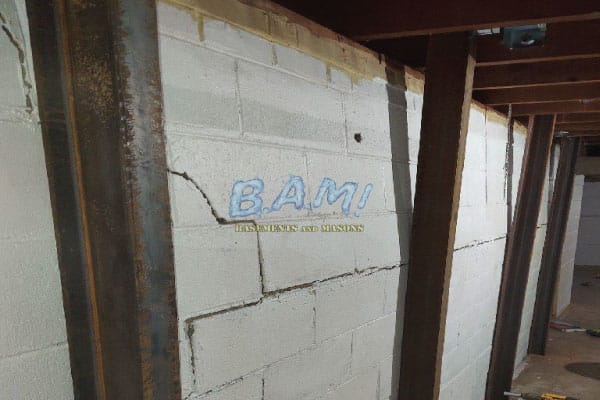Everything about Best Basement Waterproofing
Everything about Best Basement Waterproofing
Blog Article
The Best Basement Waterproofing PDFs
Table of ContentsThe Basic Principles Of Best Basement Waterproofing The 9-Minute Rule for Best Basement WaterproofingThe 10-Minute Rule for Best Basement WaterproofingThe Definitive Guide to Best Basement WaterproofingThe Ultimate Guide To Best Basement Waterproofing
AdvantaClean's experienced experts and professionals will locate the water source. If wall surface or piece fractures are existing, we will infuse polyurethane and epoxies right into the cracks and secure the concession, preventing additional dampness from getting in.Proper grading around the home to direct wetness far from the framework. Putting up, fixing, or cleaning seamless gutters and downspouts. Interior or outside waterproofing with filler, sealant, and/or water resistant paint. Installing cellar air flow systems, conditioning systems, or cellar dehumidifier systems to get water out of your basement. Selecting AdvantaClean's basement waterproofing services is an efficient means to deal with moisture and prevent mold from jeopardizing the structure of your home and the health and wellness of your family members.
If there's condensation on the outside of the foil, you have high moisture in your basement. Repair it with a mobile room dehumidifier or a whole-house humidifier system as opposed to waterproofing products. If the aluminum foil has condensation on the within surface area (beside the wall surface), the dirt around your house might be normally damp from a high water table or poor dirt drainage.
You can waterproof just your indoor wall surfaces, which may fix the problem. Once they dry out, they stick completely to concrete and stonework wall surfaces.
Some Of Best Basement Waterproofing
Swirl the brush at the last of application to give the wall surface an attractive, completed appearance. Concrete water-proof layers can not be used to formerly repainted surfaces; check the label. A 5-gallon container costs regarding $60. Known as densifiers, they are ideal just for wall surfaces that haven't been repainted or secured.
Yet you clean, roll, or spray it on a lot even more thickly one gallon covers just 75 square feet, not the 300 square feet typical with basic paint. Waterproof paint is fine for do it yourself application. You can use it over repainted surfaces, and paint over it once it's healed (one gallon prices $37).
It can set you back $10,000 to $15,000, depending on the job needed (Best Basement Waterproofing). Exterior waterproofing involves digging deep into all around the residence to the full depth of the foundation walls, after that mounting a waterproof finishing or membrane topped by drainage panels.
The Single Strategy To Use For Best Basement Waterproofing
A basement without waterproofing is kind of like that. Your cellar does not desire to go through a rainstorm without appropriate protection just as much as More about the author you do not desire to.
Outside waterproofing is a waterproofing approach that entails sealing your home from the outside. It's sort of like a moat around a castle. It involves digging a trench around your whole home down to the structure (about 8 to 10 feet down). The foundation wall surfaces get more are after that cleaned up, sealed, and covered with a water resistant membrane or sealant.

Best Basement Waterproofing Things To Know Before You Get This
It's a much more engaged process that calls for excavating up your lawn, which is expensive and taxing. Exterior waterproofing involves eliminating whatever surrounding the home, including verandas, driveways, pathways, landscape design, AC systems, decks, and more. If any of the job was done incorrectly and water is still entering your cellar, there isn't much you can do to correct or repair it.
Interior basement waterproofing involves waterproofing from the inside. Any kind of water that leakages right into your basement is rerouted prior to it touches your floor. It's type of like using a raincoat under your clothing. It entails 2 points: a water drain track and a sump pump. It works by securing the within your basement wall surfaces and floors so water that tries to get in is directed out through a sump pump.
It's a reliable approach to water-proof your basement. The disadvantage of indoor basement waterproofing mostly pertains to the installation process. This technique linked here requires kept products, furnishings, and integrated shelving or closets to be moved from touching the basement walls. And throughout installation, your basement can't be used. The largest distinction between both techniques is this: Outside waterproofing is a preventative option and interior waterproofing is a restorative solution.
Best Basement Waterproofing - Truths
Finally, exterior and interior cellar waterproofing are both reliable techniques of safeguarding your home from water damage. Outside waterproofing creates an obstacle that prevents water from entering your home, while indoor waterproofing reroutes water that does enter your home. And it is very important to note that outside waterproofing is a pricey and disruptive installation procedure when contrasted to indoor waterproofing.
Whichever method you select, make sure you select a reliable and reliable specialist for the work. If you have any concerns concerning cellar waterproofing, please reach out to us.
You can fill in our type here. Best Basement Waterproofing, begin a chat in the bottom right-hand corner, or call us at 1-800-827-0702
Report this page